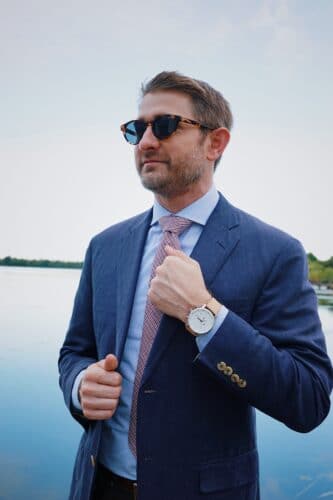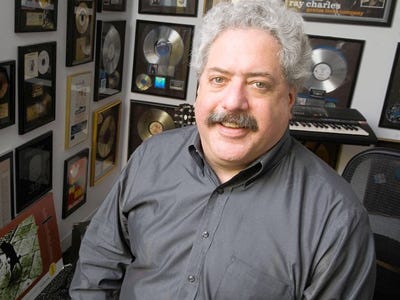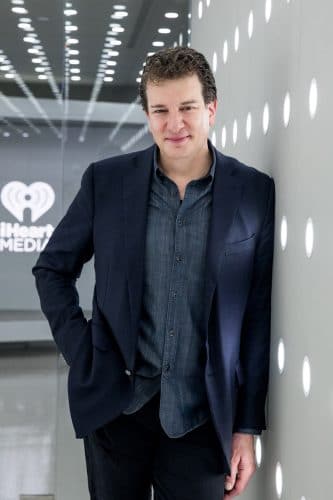
At Issue 2022: Radio’s Future Path
November 18, 2022
by Fred Deane
During the year, among the several topics of my discussions with programmers, a few issues consistently surfaced as prominent concerns. Programmers at large are uneasy about the loss of station originality and identity in their local markets. It’s an uncomfortable position programmers find themselves in and many of them are bereft of time and resources to apply effective measures into their daily and weekly agendas.
Crucial areas that suffer the most include enhancing localized marketing and branding, crafting creative initiatives to attract younger demo groups, and nurturing existing and new talent. The ambition and the will are there, but given the multiple tasks and daily maintenance agendas, there’s simply not enough time to execute the efforts.
We asked our 2022 year-end panel of experts to address some key issues in correcting radio’s course and charting a path forward that will help stimulate some internal thinking among all of us to truly take the future of our brands with the urgency-for-tomorrow treatment it warrants.

Tommy Chuck
Tommy Chuck, SVP/Programming, iHeartMedia West Central Florida
I hope to see the radio industry investing in creative talent, content and marketing which consumers demand has the most prominent spot on their dashboards. With unlimited choices, we must compete to be the best! That takes a financial investment in people, research, training, and marketing. It would also be great to find a ratings measurement system we can have high confidence in.
For those of us blessed to lead and mentor our talent, we need to make it a point to let our people know we care. Celebrate their successes. Tell them “thank you” or acknowledge when they do something spectacular. Our people are doing so many jobs on so many stations and on so many platforms across the country. We’re all stretched. Sometimes a note to say ‘great job’ or a shoutout on a call can go a long way, if sincere. If we can get the human capital component right, our best-case scenario will continue to change the world.
As an industry, we must consistently create interesting original content and provide easy opportunities for consumers in all demo groups to listen on their timeline. Our products need to be truly great and available wherever our listeners want and expect us to be. We can’t fall into the trap of being predictable and we certainly can’t read liners in a thoughtless, disconnected way. If our creatives can stay authentic, the companionship we provide will be more than relevant.
Thanks to TikTok, Instagram, Twitch, and other platforms, I believe quality entertainers are easier than ever to find. To me, that makes the talent pool better than ever. As an industry, the issue is we’ve almost eliminated all the entry level training grounds. If not eliminated, the compensation is so low for these positions that it doesn’t allow us to compete against the compensation these people can make for doing branded social media posts. To fix this, we should be smart about how we identify, hire, train and compensate these people who can become the next generation of great radio personalities.

Justin Chase
Justin Chase, Chief Content Officer, Beasley Media Group
To ensure progress for radio going forward we have to continue to diversify our revenue, specifically toward digital platforms. We must continue to lean into our advantage over all of our major media competitors which is local content. We also need to have the best local personalities creating unmatchable on-air and digital content, and we must continue to develop talent and train them to think multi-platform and instruct them to create digital content and become truly great local influencers in a multi-platform way.
It’s imperative that we look in different places to discover new talent. We should mine social media influencers and podcasters that want to find ways to become more mass appeal. There are millions of podcasters out there and most of them would love to find an outlet for exposure to a larger audience.
We need to create opportunities for young people to come into our business. Radio executives who have been in our business a long time need to make this a priority and recognize it as an investment in the future of radio.
I believe we are an attractive industry to younger demo groups to pursue careers. Any industry where there’s a perceived opportunity is attractive. I don’t know whether we’re offering young people the opportunities we used to, which could be for a variety of reasons such as budget cuts, or companies sticking with what works with current talent and not wanting to take a chance on someone new. I believe the talent approach must be frequently evaluated at all levels and companies need to know when it’s time to move on and bring in some fresh personalities. At Beasley, we’re hiring younger people in digital areas to get them in the door, and we’re trying to find those who might have air talent and we feel can be trained for additional duties.
In general, I’m optimistic about radio’s continual growth. Yes, there’s a natural erosion of audience that’s been ongoing within our industry for a while now and it’s difficult to plug that drip via the traditional over the air platform. It’s slowly declining as is all linear media. But it’s also true that there’s no reason why we should be losing our aggregate audience. In fact, Beasley’s total audience is up from five years ago, when you factor in our multiple platforms. When we look at our total owned-and-operated audience, we include on-air and digital, and that’s not even accounting for our streaming audience because we don’t own (outside) social platforms like Facebook or Instagram. That’s the cherry on the top.
We must stop thinking of ourselves as just radio brands, or audio brands. We’re content brands and we’re delivering a variety of content on several different platforms now. One of our primary goals at Beasley is to increase this growth trend across the board. We’re constantly creating digital, on-air, podcasting, and video content to expand our critical mass. We’re a modern media company, not just radio.

Brian Mack
Brian Mack, SVP Multi-Platform Strategy, iHeartMedia
The best scenario for radio going forward is our ability to migrate radio consumers to new platforms to enjoy our content while creating newer ones. That can mean many things including streaming apps, podcasts and viral social media platforms beyond audio. There are also clear advantages for revenue growth in this space with billions of dollars moving into influencer marketing. We have the original influencer in radio, start creating now! As MLK said, “Faith is taking the first step even when you don’t see the whole staircase.” We’ll always be evolving along the way just like anything else on Earth.
We also need to be where the younger demo groups are to increase our relevance in that demo segment (reference the previous paragraph). It’s no longer just Millennials or Gen Z that live in places like TikTok or Instagram, its bigger than that. For instance, my mother-in-law sends my wife and I more TikTok dog videos than we can possibly consume.
I don’t believe there’s a limited talent pool for radio to draw from. There are new talents every day, they’re just not on the radio. Perhaps it’s the industry that needs to re-think ‘talent.’ How many Millennials or Gen Z’s barely know a traditional talent in radio, but know 50 influencers they deem experts in their passion lanes? The reality is there is more talent out there than can fit in any one company, perhaps they just do more than ‘hit the post.’

Dom Theodore
Dom Theodore, President, RadioAnimal Media Strategies
The current difficult state of the radio industry is the result of mistakes made early in the consolidation era that we have never recovered from. The sheer amount of debt on the balance sheets of the largest groups that resulted from the radio “land grab” that took place when they cut the ribbon in 1996 (Telecom Bill) and continued in the years since as many overpaid to grow the size of their groups, has put radio in a position where it’s difficult to actually operate. It doesn’t have to be this way.
As passionate programmers and content creators, it’s easy to lose sight of the fact that EBITDA is how owners keep score, and it’s always been that way. But underneath it all, if you take the debt out of the equation, there’s still great cash flow, opportunity, and a sustainable business buried within the radio industry that can be unleashed, but we need to consider significant changes to achieve it.
BE AGNOSTIC ON DELIVERY SYSTEM: We really haven’t been in the “radio” business for years now, we’re in the “audio entertainment” business, and it doesn’t matter if the audio is delivered on a radio, phone, or toaster, and as long as they are listening and it’s measurable, we can monetize it. Delivery system doesn’t matter, it’s about the delivery itself.
FOCUS ON EXCLUSIVE CONTENT: The mass expense cutting has led to less interesting and vanilla sounding products that are mere “music dispensers,” but there are better music dispensers with fewer or no commercials, so we lose that battle every time. To dig out of this hole, companies need to invest in what other industries call “research and development.” In our case, incubating new products we can sell and distribute exclusively. This seems self-evident when you look at some of the big personality morning shows pulling 20 and 25 shares in men or women 25-54. Yet how many of those same stations are just dispensing music the rest of the day? Who says we can’t have big personalities in other dayparts as well?
GIVE TALENT MORE AUTONOMY: This requires managers and ownership to have your talent’s backs. I’ve witnessed situations where one complaint on Facebook caused entire morning show bits and promotions to be abandoned. Innovation will never occur in an environment like that. Risk adversity is the enemy of innovation because innovation by its very nature requires intelligent risk-taking. That doesn’t mean pure recklessness, but rather calculated and strategic risks.
THE YOUNGER DEMO PROBLEM: I’m fascinated when industry types act surprised when they see the significant erosion of younger demos using our products since radio has spent the better part of 30 years basically ignoring teens. We’ve raised an entire generation of people who have no need to listen to the radio for entertainment, so we’re not even on their radar. Add to that the lackluster content, and the massive number of more interesting options, and it’s no wonder how we got here.
While I applaud the attempt by a couple of companies to hire social media influencers and give them a radio show, this will accomplish nothing if we saddle the “influencer” with the same playbook and rules we’ve always used. How about instead of hiring a social media influencer and telling them what to do on the radio, we have them tell US what an interesting radio show would sound like, and then invest in that plan? That’s the type of experimentation I’m talking about.
ATTRACTING TALENT: Social media influencers aren’t the only pool of potential future audio entertainers. Frankly, creative types are everywhere, but we need to embrace them. But creative people are attracted to creative environments where they have the autonomy to perform. Sadly, when it comes time for budget cuts, many managers will put the creative “characters” on the table as the first sacrifices to “the accounting gods” because many creative types are non-conformist, challenging, and difficult to manage, but many times they are also RIGHT, and we need to be listening to them instead of running them out of the building.
Please don’t misunderstand, my frustration isn’t that radio has changed, it’s that it really hasn’t. We are still using very dated playbooks and models. Even the very notion of quarter hour ratings dates back to the 1920’s when shows were 15 minutes long on the original crop of AM stations, and yet we still trade in this currency today. There is hope, but it’s going to require a total rewrite of the playbook, and I’m hopeful that either companies will seek new ideas out of necessity for survival, or they’ll sell these assets at a discount to others who will.

Lee Abrams
Lee Abrams, CEO, MediaVisions
There are several components factoring into radio’s path ahead. That FM radios secure space on future audio technologies. That more inventive delivery of less obtrusive commercial loads is established. That whoever is still doing lasers, filtered voices and painfully dated production, is jailed. That FM holds its audience 50+ who migrated to digital at a much slower rate than under 50. That someone creates and aggressively markets dramatically fresh and original new younger skewing formats that literally change the paradigm, literally shaking it up.
It will need that level of originality. The old radio playbook will not survive. That the financial chaos at big radio adjusts to stability. That there’s a new generation of forward-thinking programmers. It wouldn’t hurt to attract creatives that generally find radio unattractive. That broadcasters are able to explore opportunities in light of heavy Wall St. control.
For radio to attract and grow younger demo groups, the industry must kill the denial about how great radio is and face the challenges. It’s a media war out there and radio is acting like it’s 1985 and the playing field is uncontested. Play in the audio world not the radio world. The radio world is tired and dated. The audio world is alive with energy and growth. It’s not about tech. It’s about new and exciting IDEAS that keep things interesting in a world where culture is rapidly evolving. Technology is only as good as the content it delivers. This list from three years ago remains an overview of radio’s programming issues in this decade: https://www.leeabramsmediavisions.com/blog/the-big-ten.
Regarding talent, there will be a redefinition of the function of air talent on radio. There will be more stations limiting or even eliminating on-air talent focusing on truly unique individuals in isolated dayparts. Here are some further thoughts: https://www.leeabramsmediavisions.com/blog/the-end-of-the-anchor-and-dj-era?rq=Anchor%20era.
Finding talent is about casting a wider net and avoiding convenience hires and working at recruiting on a higher level. Just like the new video talent is emerging on TikTok and YouTube, work to discover the platforms where your next talent generation is. It was a different era but here’s how we hired several hundred at the birth of XM Satellite Radio: https://www.leeabramsmediavisions.com/blog/hiring-to-re-invent-from-the-early-xm?rq=Hiring%20
Equally important to recruiting is teaching, enlightening and inspiring. Sadly, with one person often overseeing multiple stations, personal mentoring is more difficult. The current radio culture stresses the execution rather than the why.

Jon Zellner
Jon Zellner, President Programming Operations, iHeartMedia
As technology continues to evolve and dashboards offer more and more entertainment options, our brands need to focus on our biggest points of differentiation, connection and companionship. By the end of the decade, connected cars will make up 96% of all newly shipped vehicles with 1.8 billion total connected cars. By that time, any individual radio station that’s simply offering music without entertainment will be left behind.
While the role that radio plays won’t change much during the remainder of the decade, the operation of stations will continue to evolve. Programmers will have more and more of an opportunity to work with their talent to create memorable and dynamic content while technology will handle the majority of the behind the scenes and operational work. Podcasts will also continue to grow and expand the amount of time that Americans are spending with audio and digital listenership of our brands also increasing.
We need to reach Millennials and Gen Z in the environment where they’re spending most of their time which is digitally. Over 80% of digital radio listeners are under the age of 35, so our streams need to play a crucial part in our content strategy. Over 66% of Gen Zers access social media daily and are much more likely to interact with our brands and our talent socially. Our talent can reach new listeners and younger demos digitally recognizing that everything they do through these platforms is a brand extension of who they are on the air. They can share new music, get involved with a local community-based organization or show a different side of their personality through a podcast. While some of our brands might target older demos on the air, they can target younger demos creativity through the right social media platforms.
Regarding new talent options, there have never been more opportunities for a young talent to grow their brand digitally through social media and podcasts. It’s always been easier to train an entertaining person how to do a radio show than teaching a radio person how to be entertaining. Twenty years ago, we’d sometimes discover new talent in our everyday life. Today, they’re creating content on TikTok, BeReal, SuperNova, and podcasts. We’re only limiting the talent pool if we choose to not look outside of radio.

